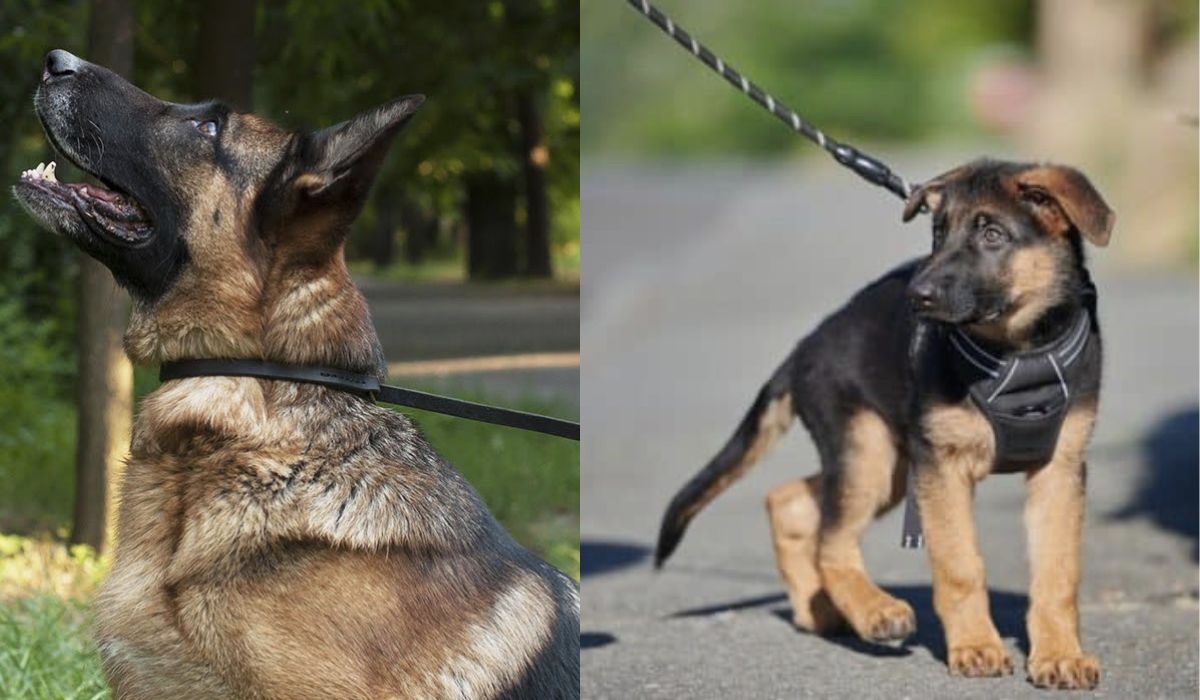German Shepherd puppies are adorable but they grow up so fast. Before you know it your tiny bundle of fluff has become a big powerful dog bursting with energy. So leash training a German Shepherd puppy to walk calmly by your side is one of the most important things you will need to do.
Why is leash training my German Shepherd puppy so important?
A fully grown German Shepherd Dog can pull up to 3 times its own body weight. Imagine that sort of power being at the end of the leash you are holding.
You don’t want to be that person being dragged down the street as your dog takes you to the park, do you?
Of course not ….
But you need to think about safety too. Seriously ask yourself if you would be able to keep hold of them if they suddenly decided to go for it? My guess is that the answer is probably not! I’m sure the last thing you would want is to be flat on your face after being pulled over or having to chase after a loose dog near a busy road.
What we all want is a well-trained German Shepherd Dog. One who is a joy to take for walks and who we know will be safe and secure when out in public.
The good news is that this is very achievable. All you need is to know how to leash train them and lots of patience.
Luckily you are here reading this guide which will help you with the first part.
I will tell you exactly what the best ways to leash train your German Shepherd puppy are. I will also cover everything from choosing the right collar and leash to how to handle any behavioural problems that may arise.
Before we start the two main questions people ask are:-
When should I start leash training my German Shepherd Puppy?
How long does it take to leash train a German Shepherd?
So let me get the answer to these questions out of the way first.
When should I start leash training my German Shepherd puppy?
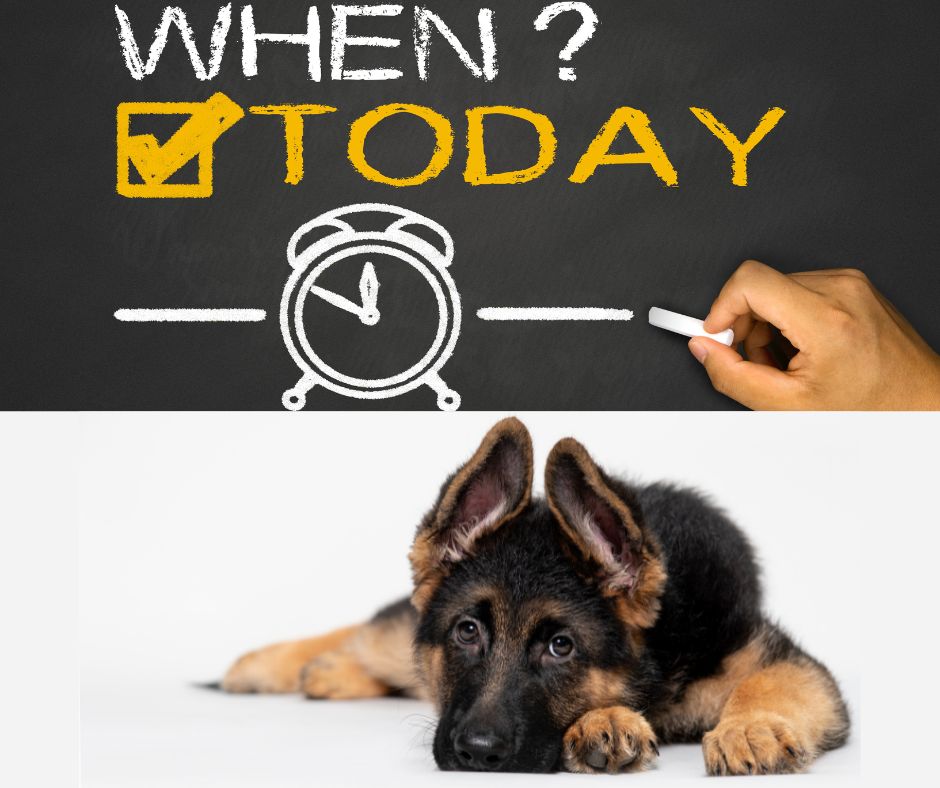
Your little puppy may seem so small at the moment and it’s tempting to put training off when they are tiny. This is a huge mistake as your puppy is actually a learning sponge right now. The quicker you get in there with the right stuff for them to soak up the better chances you will have later on.
You should start leash training your German Shepherd puppy as soon as you bring them home or from 8 weeks old.
If they are under 3 months old they won’t have completed their vaccination program yet but that should not stop you. The best place to start your puppy leash training is at home in the backyard anyway.
How long does it take to leash train a German Shepherd?
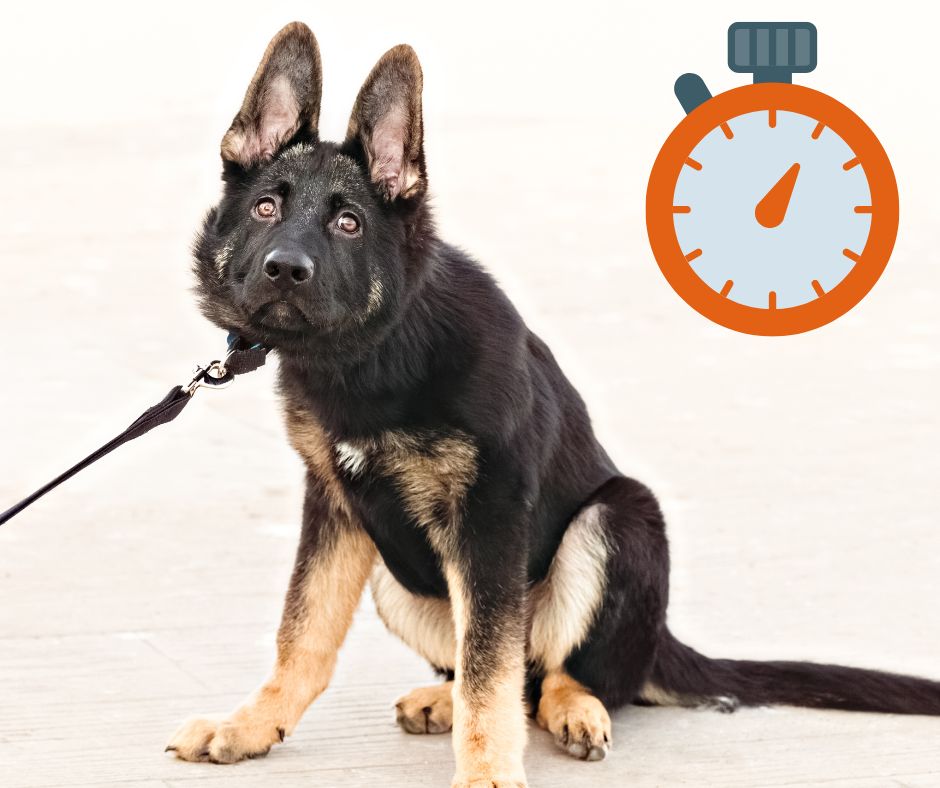
The time that it takes to leash train a German Shepherd will vary from dog to dog and trainer to trainer. No two dogs are the same and the combination of dog and trainer will not be the same either.
The main thing to remember is that it is not a race. It is far better to take your time and do it correctly than try to rush your puppy and achieve nothing.
Worse still you could inadvertently create fear and anxiety that is much more difficult to overcome later on.
Your German Shepherd Dog is very intelligent and a fast learner but when they are young they are also getting accustomed to a new home. There will be so many things they need to understand and investigate so their attention span will be limited at first.
Take things gently at their pace. Some dogs will pick it up straight away, others may take a little bit longer and that’s ok too.
As their trainer, you will also play a part in how long it takes them to learn how to walk on the leash. It is your job to show them what to do and repeat this many times if that is what it takes.
Their success will depend very much on how committed you are to repetition and how patient you are prepared to be.
Leash Training a German Shepherd Puppy is not difficult when you know-how but it’s consistency and patience that will get you there in the end.
So let’s get started with learning how to leash train a German Shepherd Puppy.
Step 1: Get the right equipment
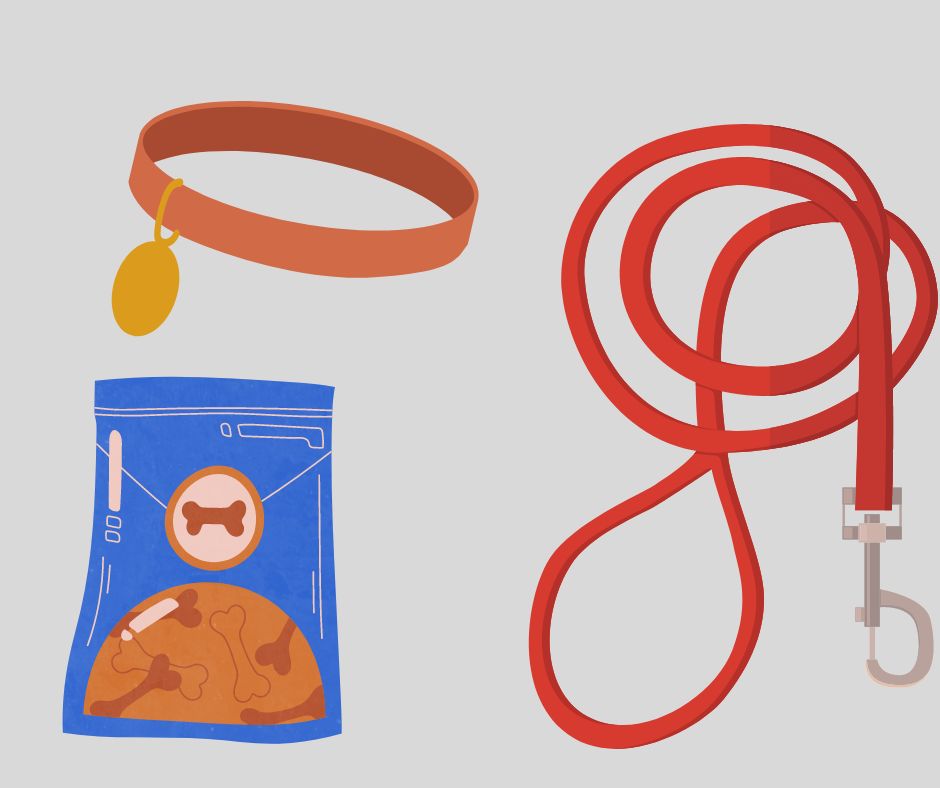
Make sure you have the correct equipment to start leash training with.
A Collar
Make sure it is made of strong leather or nylon with a well-made buckle and leash ring. It also needs to be comfortable for your dog to wear and not too tight or too loose.
A Leash
It is also important that you buy a strong leash that is no longer than 6 feet long. It needs to have a good quality steel snap hook to attach to the collar with a comfortable handle for you to hold. Don’t be tempted to use a long retractable leash as these actually encourage pulling.
Some Tasty Treats
We all respond well to treats and German Shepherd Dogs are no different. Training your puppy to walk on the leash can be speeded up immensely with positive training using plenty of praise and rewards. The treats you offer will need to be of a high enough value for the task you are asking your dog to do.
German Shepherd Dogs are very intelligent and they will soon realise if you are offering them a bad deal. I used pieces of shredded chicken breast for my dogs which worked great but it doesn’t have to be food it can also be a favourite toy.
Step 2: Get your German Shepherd puppy accustomed to wearing a collar
The first thing to do is to get your pup used to wearing a collar. Put it on for short periods of time at first, and make sure to give lots of praise and treats. They may try to get it off and whine but you just need to ignore this behaviour. Don’t be tempted to comfort or reprimand them it won’t last for long. It’s all part of the learning process and they just need to be given a bit of time to get used to it that’s all.
Step 3: Attach the leash
Introducing your German Shepherd puppy to the leash should be done gradually and patiently.
Once they are happy with their collar you can then attach the leash and let your pup drag it around the house.
Do not try to hold on to the leash or walk your pup just yet. All we are wanting to achieve at the moment is for them to understand that the leash is nothing to be scared of. You will just need to watch them to make sure that they don’t get tangled in the furniture.
Step 4: Get them used to the feel of you holding the leash
Once your German Shepherd puppy is comfortable walking around with the leash attached, you can begin working on teaching them to walk by your side.
Start by just holding the leash at the end and following your pup around the house or yard. Let your puppy set the pace and allow them to go where they want at this stage.
Also try not to let it become taught as the aim here is just to get them used to the feel of a loose leash.
Step 5: Take charge of the walk

Up until now, we have just been getting your puppy used to the feel of the leash. We now need them to understand that you are in charge of the walk. It may take some time for them to master this.
Young puppies especially have low attention spans and there are so many other exciting things to sniff at and explore.
I found that the best way to do this was to get your puppy to follow you. Call them to you using their name and the command “come” in an excited voice. When they get to you reward them with lots of praise and treats.
It is important that you keep the leash loose you don’t want to be dragging your puppy along they need to come willingly. If they stop or get sidetracked then encourage them with a treat or toy and keep praising and rewarding them every time they follow you.
Your puppy will graduate from this level of training once they are following you without any encouragement.
Step 6: Teach your Puppy how to be patient.
I think this is the most difficult part for your dog to learn and it is also the part where many owners lose patience and give up too.
As your puppy gets older and starts to realise that the leash means a walk it is natural for them to become very excited.
Unfortunately, when they are in this state of mind they are not listening to you they just want to get out on that walk as fast as possible. They may jump about, spin round, bark or whine in excitement rather than stand still making it very difficult to even attach the leash.
This excitement then continues as you walk through the door and for a good part of the walk itself too.
If you have ever watched dogs arriving at the park to those leaving you will know exactly what I mean. The slow calm walk back is not because the dog is tired its because that pent-up excitement has been released.
It is important that you get your puppy to calm down before you attach the leash. They really do need to learn that the walk will not happen unless they settle down and listen to you. When you start a walk with a calm dog it will be a far better experience believe me.
Reorganise your schedule to make time

The problem I see a lot is owners just don’t have the time to wait about getting their dog to sit and calm down before the walk starts. This is usually because they schedule the walk just before they need to be somewhere important. This results in any bad behaviour being ignored as the priority is to get it over and done with as quickly as possible so you can get to where you need to be.
Hey, I’m guilty of this myself so I’m not judging.
It’s just that I paid the price for it and ended up with a big male German Shepherd Dog who pulled like crazy on every walk he was taken on. He got so bad that only my husband was able to handle him.
It’s all because we did not spend that time getting him to calm down before a walk when he was a puppy. So please don’t skip this step you will be so glad you didn’t in the end.
So how do you get your German Shepherd Dog to calm down before the walk?
You need to teach them how to be patient. The exercise walks are what we need to master and the only way to do this is to teach your dog it’s not going to happen if they don’t listen to you.
For this reason, it is no good trying to do this training if your dog is bursting for the bathroom or you need to get to work in an hour’s time. So reorganise your schedule to make sure that you can spend as long as it takes on theses sessions.
Basically, the lesson your dog needs to learn is if they are not calm there is no walk. So every time you take them on a walk you must make sure you have plenty of time on your hands to be consistent with this.
If on any occasion you find that you are taking them out before they are calm because you have run out of time or patience then you are just undermining your own work. Your dog will continue to think it’s ok to get excited before a walk and you are likely to end up with an adult German Shepherd Dog who pulls you all over the place.
Here’s what you need to do.

This is likely to take some time so choose a time when you are not in a rush to get this over with and your dog is not desperate for the bathroom. Put them out to potty in the yard first.
- Pick up the leash and ask your dog to sit at the door.
- Only attach the leash when they are sitting and calm.
- Give praise and a tasty treat for allowing you to attach the leash whilst they are sitting calmly.
Only attach the leash when they are sitting and calm.
Give praise and a tasty treat for allowing you to attach the leash whilst they were sitting calmly.
If they don’t sit walk away from the door and even put the leash away. Don’t keep asking them to sit if they have ignored you the first time. When they realise the walk is not happening after all they will calm down again.
Once they are calm repeat the steps above until you get success. It’s boring and frustrating I know but if you give in too soon you are running the risk of problems later on.
- With the leash attached and your dog sitting calmly you can open the door.
- If they try to rush past you shut the door again and ask them sit once again.
You may need to keep doing this a few times too.
- When your dog is sitting calmly with the door open you can give them the release command to tell them it is ok to walk through the door. The release command can be any word of your choosing as long as you stick to the same word. I use OK.
- Once outside ask them to sit again while you close the door.
- Give the release command again to tell them you are ready to start the walk.
During these initial stages of training, it is also a good idea to randomly ask them to sit during the walk too as it will help reinforce sitting on command.
Once you and your dog have mastered this stage you are well on the way to having a very well-behaved Geman Shepherd on the leash.
Now we just need to work on getting them to walk to heel.
Step 7: Walking to heel
Make sure you have a pocket full of tasty treats. You need to walk at a steady pace and try to keep your dog in line with your knee.
The aim is to have a loose leash at all times. If you feel the leash go taught then your dog is moving away from you. Use short sharp tugs on the leash to pull them back into position accompanied by the command word “heel”.
Every time they obey this command praise and reward them with a treat.
Again consistency is key: correct with the command word then praise and reward.
Step 8: How to stop a German Shepherd from Pulling
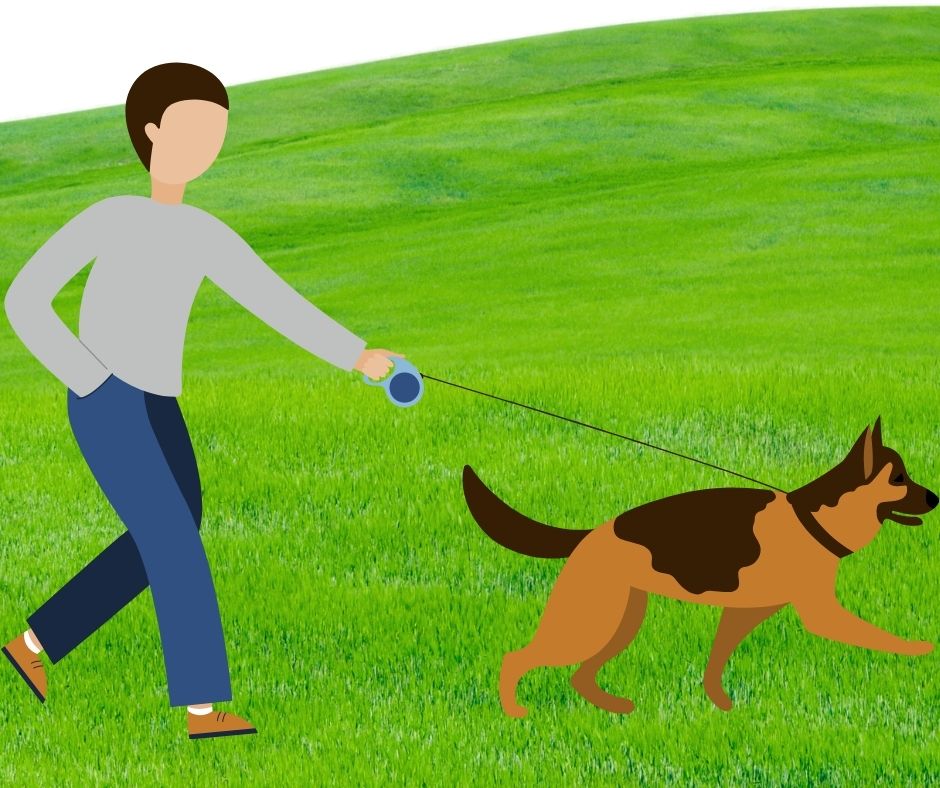
If simply calling your dog back to heel is not working then there are a couple of other methods you can use.
The Stop Method
This method involves you walking along with your dog with a loose leash. If your pup starts to pull ahead, simply stop walking and wait for them to return to you. When they do, give them lots of praise and treats.
The Turnaround Method
This is exactly the same as the stop method other than you turn around and start walking in the opposite direction instead of just stopping. Again as soon as your dog is back at your side give them lots of praise and treats.
Your dog will associate the praise and teats with what they need to do. With time and patience, they will learn to follow your lead and pace rather than try to set the pace themselves.
Leash Training A German Shepherd Puppy Summary
- Training a German Shepherd puppy to walk on a leash is not a difficult task to master. However, it will take some time and consistency on your part which you will find boring and frustrating at times.
- Remember it is not a race to the finish line. Take things slowly one step at a time.
- Make sure you allocate plenty of time to each training session even if it takes you several hours to just get out of the door. This frustrating time won’t last forever and it will be worth it in the end.
- Make leash training a positive experience for your German Shepherd puppy. This means using lots of praise and treats and avoiding any type of punishment. If you scold them or try to force them to walk by your side you will get a negative effect. They will become more resistant and may even start to dislike walks altogether which is not what you want.
- Remember to be patient, use positive reinforcement, and have fun! With a little bit of effort, you will be the proud owner of a well-trained German Shepherd that you can enjoy taking for walks for years to come.
Tips to takeaway
Leash training a German Shepherd puppy can be challenging, but there are some things you can do to make it easier. Here are a few tips you can try.
- Use a high-value treat or toy that your pup loves. This will help get their attention and make them want to come to you.
- Be consistent with your commands. They will only become confused if you use different words or phrases each time you call your pup.
- Praise and reward your puppy each time they come when called. This will help reinforce the behaviour and make them more likely to do it again.
Common Problems And How To Solve Them

If your German Shepherd puppy is having trouble with leash training, you can try a few things.
| Problem | Possible Solution |
|---|---|
| Your puppy is distressed and frightened. | This usually means you have moved on a step too quickly or your puppy is unsure of its environment. If they are fearful of the leash then it helps to leave it lying around the house in places your puppy will frequent. This will get them used to seeing it around and becoming accustomed to its smell. If they are scared of the environment then try taking them to a more familiar place or even keep things simple in the backyard for now. |
| Your puppy is biting the leash | Gently take hold of their collar, give the “no” command and drop the leash. When your puppy drops the leash praise and reward them. You can then pick up the leash again. You may need to do this quite a few times. If you puppy is biting the leash regularly on walks you may want to commit to a specific training session in the house or yard that solely addresses this issue. |
| Your puppy is pulling | Invest in a no-pull harness. This type of harness attaches around the chest and can help to prevent your pup from pulling ahead. |
| Your puppy won’t come | Start by teaching your pup to come when called in a low-distraction environment, such as your backyard. Once they have mastered this, you can begin working on recalls in more challenging environments. |
| Your puppy won’t walk by your side | Many puppies will try to pull ahead or lag, and keeping them focused on you can be difficult. Use a treat pouch or toy filled with treats you can give your pup when they walk by your side. This will help to keep their attention focused on you. |
| Your puppy just lays down or sits and won’t move. | They are likely to be tired as their little legs cannot walk very far at first. The older your puppy is the longer they will be able to walk for. If you have an 8 week old puppy then try to keep their walks to no longer than 5 to 10 minutes at a time. You can then add another 5 minutes every month after that. |
| Nothing seems to be working | If all else fails, seek out the help of a professional trainer as it sounds as though you may need a little bit more help than this article can provide. They will be able to give you more specific one-to-one advice on how to deal with any behavioural issues your particular pup may be having. |
Final Verdict!
Congratulations on your new German Shepherd puppy!
As you begin the process of leash training your pup, remember to allocate lots of time to each session, be patient and consistent.
Be sure to keep things positive for both you and your dog, and soon you’ll have a well-behaved German Shepherd Dog walking by your side.
Good luck – and happy training!
Please feel free to ask any questions or share any experiences you may have had in the comments below. I love to hear stories from other German Shepherd owners. I am also more than happy to help with any questions you may have regarding leash training a German Shepherd Puppy.
